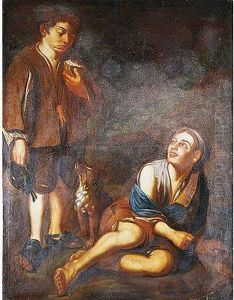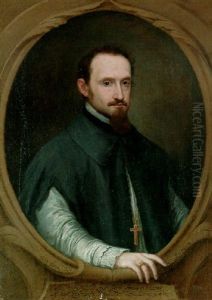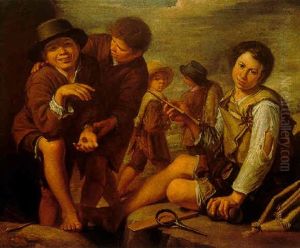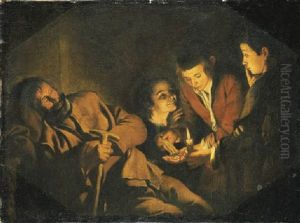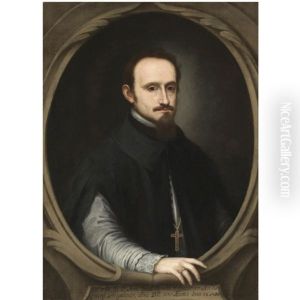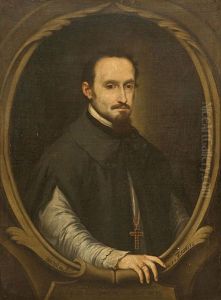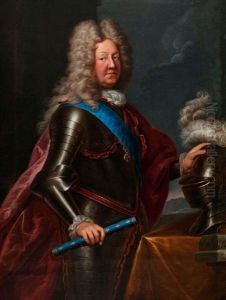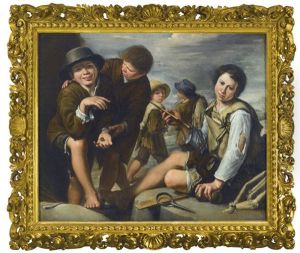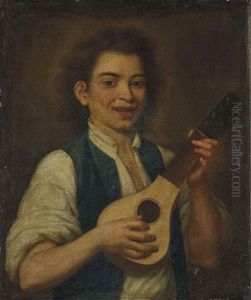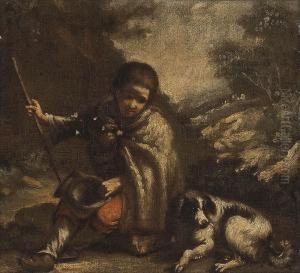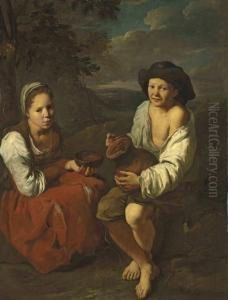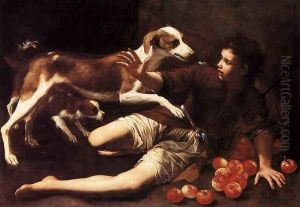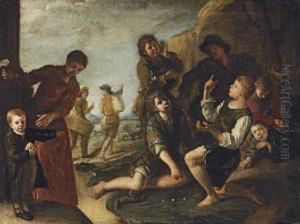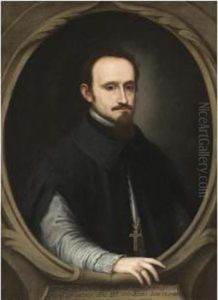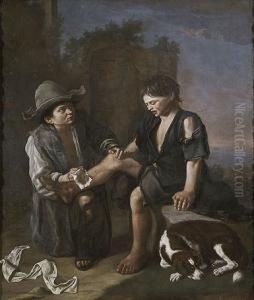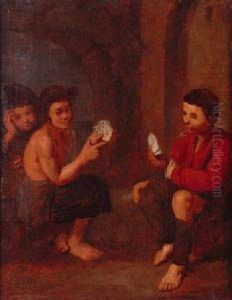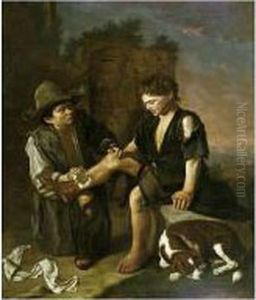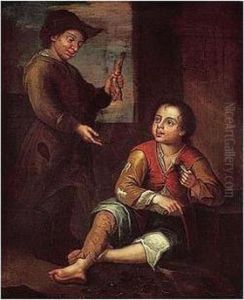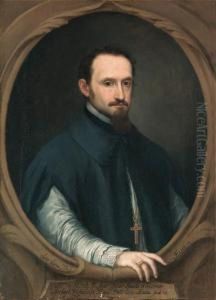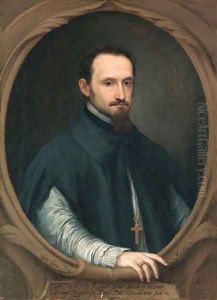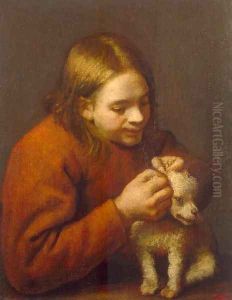Pedro Nunez De Villavicencio Paintings
Pedro Núñez de Villavicencio was a Spanish painter during the Baroque period, born in Seville in 1644. He is best recognized for his work within the realm of religious and genre painting. Villavicencio's life and career were deeply rooted in the rich cultural and artistic environment of Seville, a city that also nurtured the talents of Diego Velázquez and Bartolomé Esteban Murillo, among others.
From a young age, Villavicencio showed a profound interest in painting, and his education in the arts was likely influenced by the vibrant Sevillian artistic scene. Although specific details about his training are somewhat obscure, it is believed that he may have been a pupil or at least influenced by Murillo, one of the most prominent painters of the time. This connection is suggested through the stylistic similarities between Villavicencio's and Murillo's works, especially in the treatment of religious subjects and the soft, luminous quality of their paintings.
Villavicencio's oeuvre includes a variety of religious compositions, reflecting the strong Catholic faith and the demand for religious art in Spain during the Counter-Reformation. His works are characterized by a gentle, compassionate approach to religious themes, often focusing on the humanity of biblical figures and saints. He also produced genre paintings that captured scenes of everyday life, demonstrating his versatility as an artist and his keen observation of the world around him.
Despite his talent, Pedro Núñez de Villavicencio did not achieve the same level of fame as some of his contemporaries. His works, however, have been appreciated for their emotional depth and technical skill. After his death in 1700, Villavicencio's contributions to Spanish Baroque art were somewhat overshadowed by the towering figures of his era, but recent scholarship has begun to reassess his work, recognizing its significance within the context of 17th-century Spanish painting.
Today, Villavicencio's paintings can be found in several museums and private collections, where they continue to be studied and admired for their beauty and historical value. His legacy, while not as widely recognized as that of some of his peers, remains an important part of the tapestry of Spanish Baroque art.
